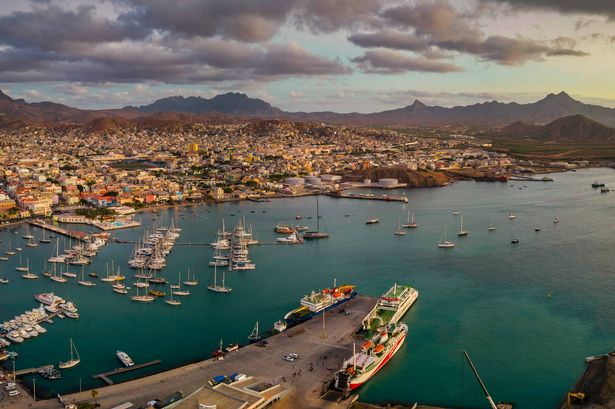A far-flung holiday destination is stealing the limelight due to its white sand beaches, lush jungle and volcanic landscapes – and it’s hot in Autumn.
The volcanic island chain of Cape Verde, nestled in the central Atlantic Ocean off the coast of West Africa, epitomises the idyllic island life – boasting year-round warm temperatures, sandy beaches, lush, mountainous areas and a volcanic landscape, reports the Express.
Cape Verde -also known as Cabo Verde- enjoys glorious weather for most of the year. In September, typically the hottest month, temperatures can climb up to a sizzling 35C. By October, you can still expect balmy weather with temperatures hovering between 26 and 28C, peaking at around 30C. Even in the cooler months of January and February, temperatures rarely dip below a pleasant 21C.
This cluster of 10 islands lies hidden in the eastern Atlantic, directly opposite the small African nation of Senegal.
Cape Verde secured independence from Portugal in 1975, though the islands’ heritage endures today through landmarks like the Monumento de Diogo Gomes – a monument to the Portuguese explorer – and the Presidential Palace, constructed during the 19th century for the Portuguese governor.
Cape Verdean culture is a rich blend of Portuguese and West African influences.
The republic boasts its own distinctive music and dance, collectively named Morna – which is most often sung in Cape Verdean Creole, a language that is commonly spoken throughout the islands, in addition to the official language of Portuguese.
Fogo Island stands as the clearest testament to the archipelago’s volcanic heritage, with Fogo meaning “fire” in Portuguese.
The cone-shaped peak of Pico do Fogo soars to 2,829 metres and last erupted in 2015 – though this doesn’t appear to concern the nearly 36,000 residents. Chã das Caldeiras, a settlement of roughly 700 people, sits within the volcano’s crater.
Visitors can explore the hauntingly deserted Esperadinha Airport, situated on the south-westernmost island of Brava. The airport is situated on the only flat pieces of land, a precarious location on a narrow promontory near the water’s edge.
The terminal opened its doors in 1992 but had to cease operations in 2004 due to the strong winds that made it perilous for planes to land.
Nowadays, one can wander across the abandoned tarmac and inside its dilapidated buildings. There are two other defunct airports in the archipelago – Agostinho Neto Airport, in Santo Antão and Mosteiros in Fogo.
Flights are between five and a half to six hours long, with direct connections from the UK to Sal or Boa Vista primarily operated by TUI Airways and easyJet from various UK airports like London Gatwick, Birmingham, Manchester, and Bristol.
Those willing to make the trip to this far-flung paradise, however, will be rewarded with sun, sand, fascinating culture and stunning views.
